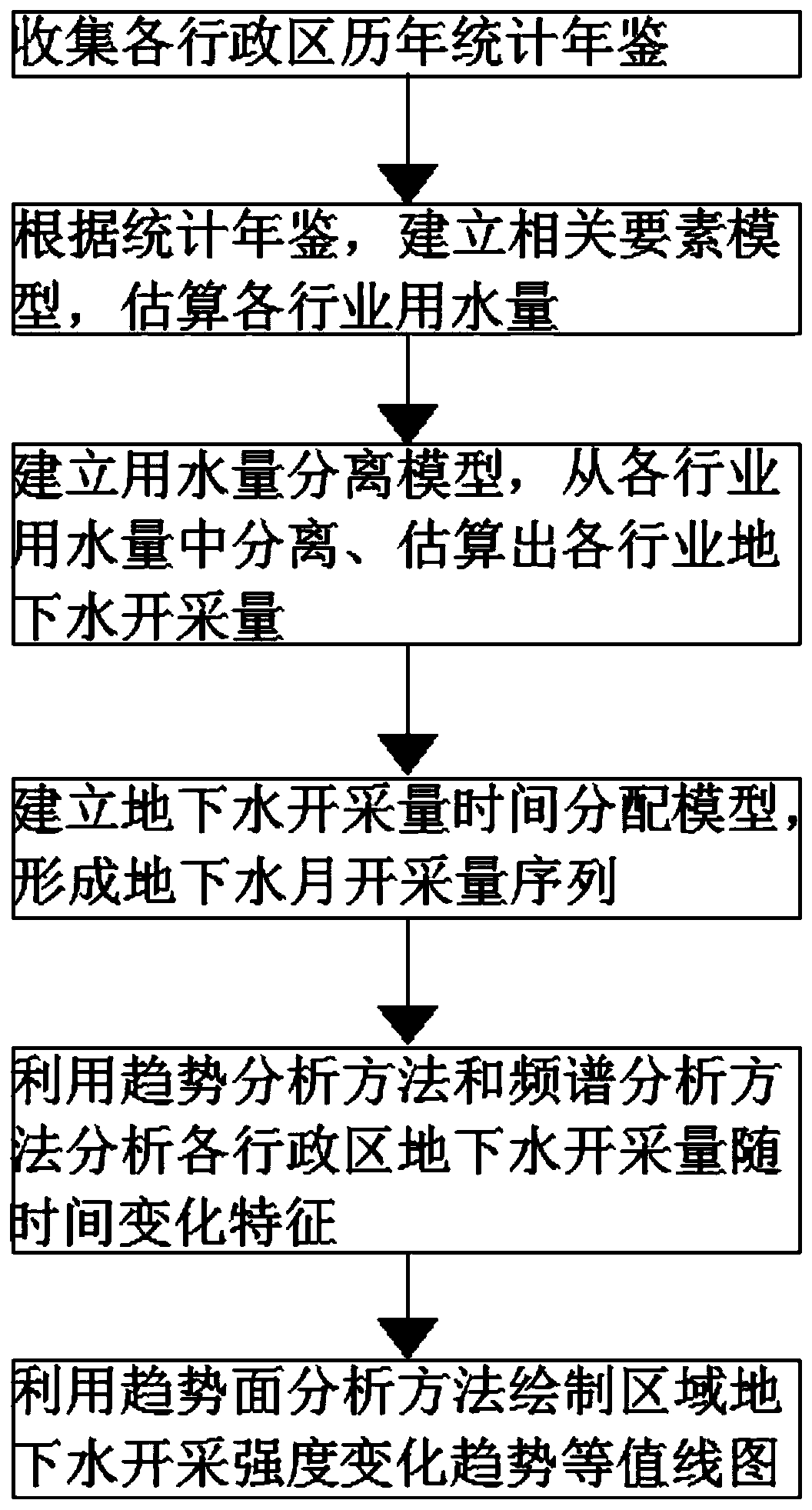Method for determining underground water exploitation quantity sequence and regional distribution characteristics
A regional distribution and groundwater technology, applied in 2D image generation, image data processing, instruments, etc., can solve the problems of heavy workload and low reliability, reduce workload, improve data accuracy, and achieve major social benefits Effect
- Summary
- Abstract
- Description
- Claims
- Application Information
AI Technical Summary
Problems solved by technology
Method used
Image
Examples
Embodiment Construction
[0031] The following will clearly and completely describe the technical solutions in the embodiments of the present invention with reference to the accompanying drawings in the embodiments of the present invention. Obviously, the described embodiments are only some, not all, embodiments of the present invention. All other embodiments obtained by persons of ordinary skill in the art based on the embodiments of the present invention belong to the protection scope of the present invention.
[0032] Such as figure 1 As shown, a method for determining the sequence and regional distribution characteristics of groundwater extraction, specifically includes the following steps:
[0033] S1: Collect the statistical yearbooks of each administrative region over the years;
[0034] S2: According to the Statistical Yearbook, establish a model of relevant elements to estimate the water consumption of various industries;
[0035] S3: Establish a water consumption separation model, separate ...
PUM
 Login to View More
Login to View More Abstract
Description
Claims
Application Information
 Login to View More
Login to View More - R&D
- Intellectual Property
- Life Sciences
- Materials
- Tech Scout
- Unparalleled Data Quality
- Higher Quality Content
- 60% Fewer Hallucinations
Browse by: Latest US Patents, China's latest patents, Technical Efficacy Thesaurus, Application Domain, Technology Topic, Popular Technical Reports.
© 2025 PatSnap. All rights reserved.Legal|Privacy policy|Modern Slavery Act Transparency Statement|Sitemap|About US| Contact US: help@patsnap.com

